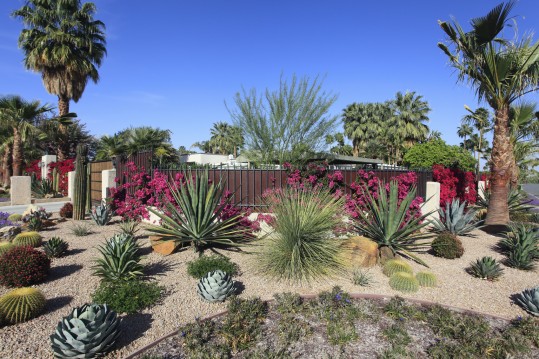


Xeriscape
/ˈzi(ə)rəˌskāp
Noun: a style of landscape design requiring little or no irrigation or other maintenance, used in arid regions.
Xeriscape is a term coined by combining the Greek root “Xeri” meaning dry and “Scape” meaning scenery. This term has become more and more prominent with the recent push toward water conservation.
Xeriscape, or Dry-Scape, is basically a set of guidelines for water-conservation landscaping. Using this approach will allow you to plan and maintain an attractive landscape with water efficiency.
With the many different varieties of drought-resistant plants available that provide bursts of color, you can still create a breathtaking landscape. With the use of textures, shapes, foliage color, and choice of plants that attract particular birds and butterflies a xeriscape lawn can be much more than rocks and cactus. Xeriscape will limit water use but does not limit style or personalized creativity.
Here are some tips from the Tucson Botanical Gardens for proper xeriscaping:
1. Plan and design to utilize water for most efficient use.
2. Plant choices – Match the conditions that you have to the proper plants by researching the plant’s water needs, growth size, and sun exposure.
3. Dig good holes – Dig 2-3 times the width of the root and make sure there is proper drainage.
4. Use turf and water features as cooling sources – if you plan to have any water features keep them close to a frequently used door to the house. This will allow the moisture to help cool the area closest to the house.
5. Irrigate efficiently – Drip irrigation systems are a convenient way to irrigate plants but you will need to change watering times and durations with the seasons. You can also make use of:
6. Use mulches – Cover the surface around plants to allow the moisture to sink into the soil before evaporating in the sun. Mulch also works to reduce weeds and decrease soil temperature around plants. Mulches need to be maintained at a depth of three inches to be effective.
7. Practice proper maintenance – Prune plants for health not for size. Pruned plants require more water to compensate for the moisture needed to heal the wound lost at the cut. Gardens grow and change over time, plants do not live forever, replace plants as necessary with environmentally suitable plants for their location.